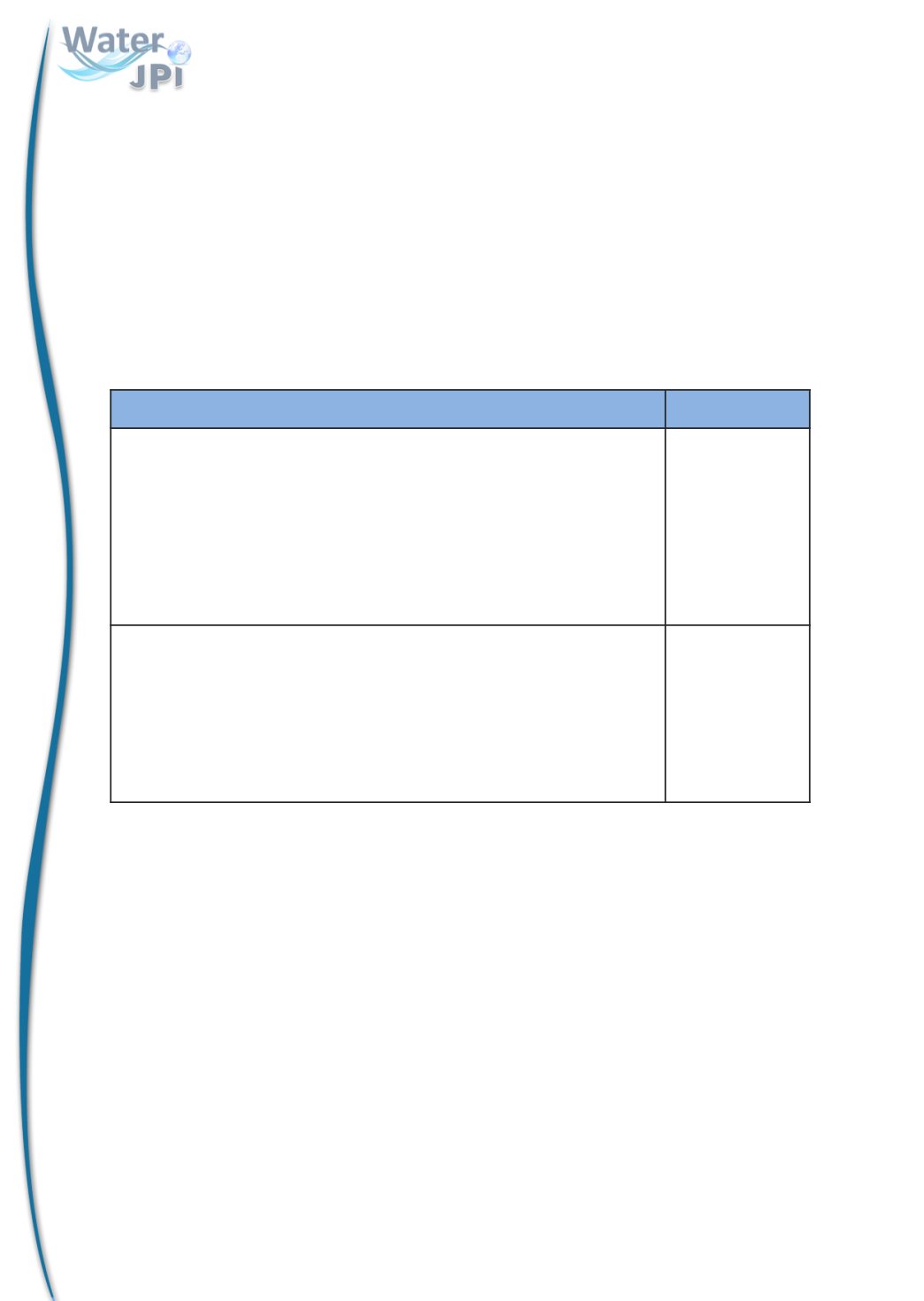
3.1.3 Managing the Effects of Hydro-climatic Extreme
Events and Multiple Pressures on Ecosystems
Integrated systems for collecting, analysing, interpreting, and communicating data can be used
to make decisions early enough to protect public health and the environment from the effects
of extreme weather events, and to minimise unnecessary concerns and inconveniences to the
population. The primary objectives of forecasting tools (including EWS) are to improve predic-
tion of catastrophic events (floods, droughts) and to minimise the impacts on human lives,
natural ecosystems, cultural heritage and food cycles.
Currently Identified Needs
RDI needs and rel ated ob jecti ves
T ime frame
1 .3. 1. Sett i ng the causes of drought /sca rc i ty; predi ct ing
drought events and water scarc i ty
- Diagnosing the causes of water scarcity in Europe, and forecasting the
incidence of drought events under climate change scenarios. Studies at
the regional scale will be favoured.
- Developing management strategies focusing on cost–benefit analyses
of agricultural evapotranspiration
vs.
water conservation for alternative
hydrological uses.
Short
1.3.2. Developing innovative (or improved) tools for the pro-
tect ion and prevent i on of hydro-c limat ic ext reme events
- Developing innovative tools (such as EWS) for prevention and protec-
tion of extreme events, including sensor technology and monitoring net-
works.
- Improving EWS for the forecasting of flooding and the assessment of
associated risks.
Short
20


